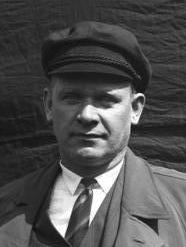Ernst Thälmann – How Hitler Killed His Enemy in a Concentration Camp

Ernst Thälmann was born in Hamburg into a family of small shop owners, but due to conflicts with his parents, he worked as a handyman from a young age. He even lived in America for a while. During World War I, he fought on the Western Front, and was awarded the Iron Cross 2nd Class and the Hanseatic Cross.
After the November Revolution of 1918, Thälmann joined the “left” Social Democrats, and in 1920 he joined the Communist Party. In October 1923, he became one of the leaders of the adventurous Hamburg Uprising, which ended in defeat and the death of a hundred people. However, this uprising increased Thälmann’s personal fame, so that in 1925 he became chairman of the KPD. In this position, Thälmann squeezed out of the Communist Party as “Rights” and the “Left” deviators and completely “synchronized” the KPD with the general line of the Comintern.
In the first round of the 1925 presidential election, Thälmann won 6.97% of the vote. Despite the lack of prospects, the Communists refused to withdraw their candidate in the second round. In the end, Thälmann won 6.36%, and the Republican candidate Wilhelm Marx (45.31%) lost to the right-wing anti-Republican Paul von Hindenburg (48.29%), who a few years later led the dismantling of parliamentary democracy.
In the early 1930s, Thälmann called for a struggle against both “ordinary” fascists and “social fascists,” i.e., social democrats. However, as I wrote recently, the insinuation that this somehow contributed to the victory of the Nazis is unfounded for a number of reasons.
In the 1932 presidential election, Thälmann won 13.24% in the first round and 10.16% in the second.
Hitler’s rise to power was seen by the Communists as a natural sign of the agony of capitalism. Astonishingly, the Communist Party was not prepared for being pulverized. But that’s exactly what happened! After the burning of the Reichstag on the night of February 27-28, 1933, the KPD was effectively outlawed. Thälmann himself was arrested in a safe house on March 3. Stormtroopers regularly tortured him – they beat him with a whip made of hippopotamus skin, Several teeth were knocked out.
Initially, they wanted to try Thälmann at a show trial. But in the autumn of 1933, the Nazis disgraced themselves at a similar trial for the Reichstag fire, so that the Communist leader preferred to simply be kept under permanent “protective arrest.”
For leftists around the world, Thälmann became a martyr languishing in Nazi dungeons. A battalion of the International Brigades, which fought on the side of the Republic in the Spanish Civil War, was named after him. At the same time, during the period of warming relations between Germany and the USSR in 1939/41, neither Stalin nor the new leaders of the KPD, Wilhelm Pieck and Walter Ulbricht, did anything to free Thälmann. For them, he was more convenient as a symbol rather than as a real political player.
I have already written that after the assassination attempt on July 20 and the defeats on the fronts, Hitler decided to destroy all the alternative political elite from the Weimar era who could theoretically enter into negotiations with the Allies. On August 18, the SS secretly shot Thälmann in the Buchenwald concentration camp and burned his corpse in a crematorium. Soon after, it was officially reported that the Communist leader had been killed by American bombing.
In the GDR, Thälmann became the local “Grandpa Lenin”. Monuments were erected to him, streets, squares, stadiums and even a pioneer organization were named after him.
In modern Germany, Thälmann’s legacy is more problematic. And it was not only that Thälmann was the leader of a totalitarian party that did not shy away from violence and aimed at the destruction of parliamentary democracy. Even from the point of view of many communists, Thälmann was the creator of an authoritarian vertical and a meek executor of Stalin’s instructions, who crushed any inner-party discussion, moved murky people to the top, and made a number of dubious strategic decisions.
However, all this does not negate the fact that Ernst Thälmann bravely endured 11 years of imprisonment in Hitler’s torture chambers, and for his political ideals was murdered without trial 9 months before the collapse of the Nazi regime.
